This series contains 12 animated historical maps. For a preview, please consult the map below:
▶ Aelia Capitolina Roman Jerusalem (70 CE-325 CE)
Subscribe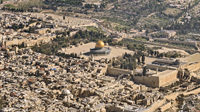
Jerusalem: The History of a Global City
Twelve animated maps covering 3000 years of the history of Jerusalem, the threefold holy city of the Jews, Christians and Muslims.
Geographic characteristics of the site and the delicate problem of water supply; the great builders of the city: Solomon, Herod, Suleiman.
The emblematic sites: Temple Mount and the Esplanade of the Mosques, Mount Zion, City walls many times destroyed and rebuilt, gates and streets that give structure to the town.
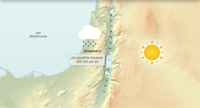
The site of Jerusalem
Video extract
Two hills loom over the future site of Jerusalem: the Mount of Olives to the east and Mount Zion to the south-west. In the centre, the first settlements were located on top of a rocky outcrop on the southern slopes of Mount Ophel.
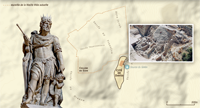
Biblical Jerusalem
Video extract
According to the Bible, Jerusalem was originally inhabited by a Canaanite group called “Jebusites”. At the beginning of the 10th century BCE, King David and the Israelites took control of the city and established the citadel on top of the rocky ridge, South-East of the present Old City.
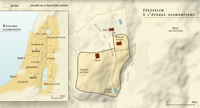
Hasmonean Jerusalem (164 – 63 BCE)
Video extract
In 168 BCE, unrest in Jerusalem made Antiochus IV think that the Judeans were rebelling. He therefore took punitive measures and declared that the traditional Jewish customs were illegal. This decision led to the Maccabean revolt, led by Judas Maccabaeus and his brothers, who succeeded in taking control of the Temple and the city.
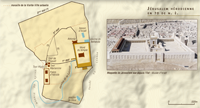
Herodian Jerusalem
Video extract
After the taking of Jerusalem by the Roman general Pompey in 63 BCE, the city – and Judea as a whole – fell under Roman control. As a matter of fact, it was with the help of the Senate and the Roman legions that Herod the Great became king of Judea.
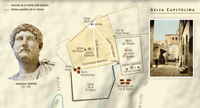
Aelia Capitolina Roman Jerusalem (70 CE-325 CE)
Complete video
In 129 CE, Emperor Hadrian decided to rebuild Jerusalem and therein establish a Roman colony named Aelia Capitolina. This decision led to the last major revolt by the Jews against Rome, also known as the Bar Kohba Revolt which took place between 132 and 135. Following this revolt, the Emperor definitively banished the Jewish population from the city.
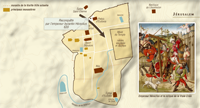
Christian and Byzantine Jerusalem
Video extract
During the first centuries of the Common Era, Christian communities began to multiply in the Roman Empire and notably in Asia Minor, Syria and Palestine. Following the conversion of Emperor Constantine in the 320s, Aelia Capitolina was officially pronounced a Christian city as part of the Roman Empire, and it retained this status under the Byzantine Empire.
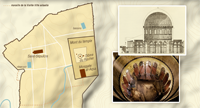
Jerusalem is integrated into the Islamic Empire (630-11th century)
Video extract
Ten years after the death of the Prophet Mohammed in 632, the Arabs had conquered the entire Fertile Crescent and Egypt. The city of Jerusalem was conquered sometime between 635 and 638. Unlike previous military conquests that marked its history, this time Jerusalem did not suffer from serious destruction or significant changes in population.
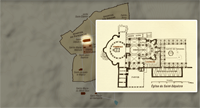
Jerusalem under the Franks (1099-1187) (1240-1244)
Video extract
On 15 July 1099, the army of the First Crusade broke through the North Wall of Jerusalem and captured the city. A large proportion of the population was massacred, some even on the roof of the Al-Aqsa Mosque; the survivors were sent into slavery. Many of the Crusaders returned home, having carried out their vow to free the holy city. By the end of 1099, only a few hundred people, all foreigners, were still living in Jerusalem.
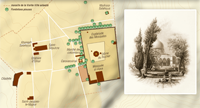
Jerusalem, an Islamic city (13th-16th centuries)
Video extract
There had been few reactions to the fall of Jerusalem to the Crusaders in 1099. However, eight decades later, the Muslim armies were mobilised to retake the city and, in 1187, Saladin conquered Jerusalem and banished all the Franks. The return of Jerusalem to Islamic Law led at last to the return of Jews, now reauthorized to live in the city.
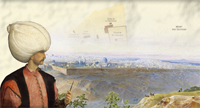
Jerusalem under the Ottoman Empire
Video extract
After two and a half centuries of Mamluk rule, Jerusalem changed hands and became part of the Ottoman Empire in 1516. It was no longer governed from Cairo, but from the Empire’s capital, Istanbul. The transfer from Mamluk to Ottoman sovereignty was relatively peaceful, as evidenced by the harmonious improvements made to the Temple Mount, known as Haram Al-Sharif.
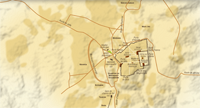
Jerusalem expands beyond its walls (1850-1948)
Video extract
In 1872, the canton of Jerusalem, which had previously been part of Damascus, was placed under direct government by Istanbul. Encouraged by this new development, the population of Jerusalem grew from 15,000 inhabitants in 1850 to 70,000 by the beginning of World War I. Much too cramped inside the Ottoman walls, the city began to spread across the neighbouring hills.
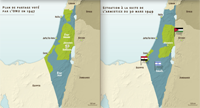
Jerusalem since 1948: One capital or two?
Video extract
After the Second World War, the international community renewed its interest in the future of the Holy City. Under a partition plan approved by the United Nations in autumn 1947, the region around Jerusalem and Bethlehem was established as a separate entity from the future States of Israel and Palestine.

